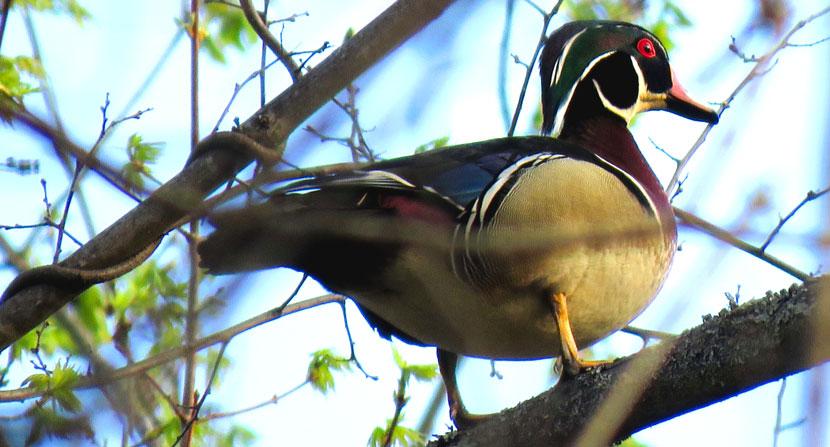Scenes from June by Floodplain Photographer Ellen Kenny
- Tags:
- Wildlife
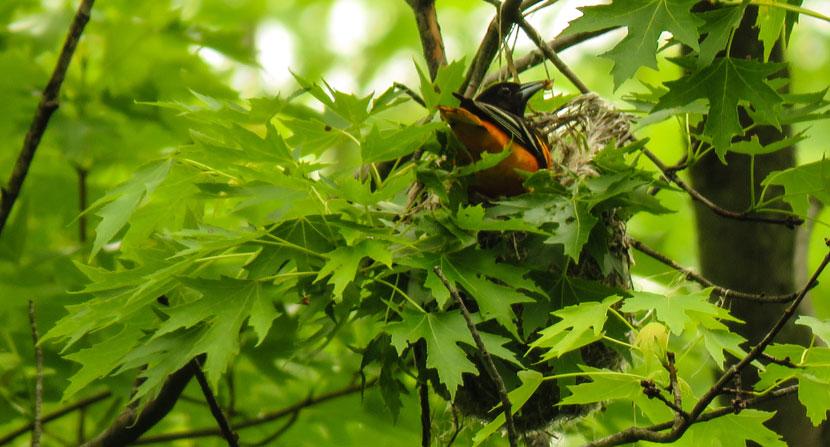
A Baltimore oriole sits on its hanging, sock-like nest
June is a month of nesting on the floodplain. Along the Mill Brook there were four nests that could be seen this month without too much difficulty: the woven, hanging sock-like nest of an oriole right above the path, a robin’s nest in a cleft of a tree beside the brook, a tree cavity that housed a nesting wood duck (that also had some visits from a hooded merganser!) and a mourning dove’s nest high up in a silver maple on the far side of the brook. Further down the path a noisy brood of downy woodpeckers could be seen popping their heads out of a hole in a white pine, like cuckoo’s from a clock, and on the river side, a king bird nesting on a snag above the water.
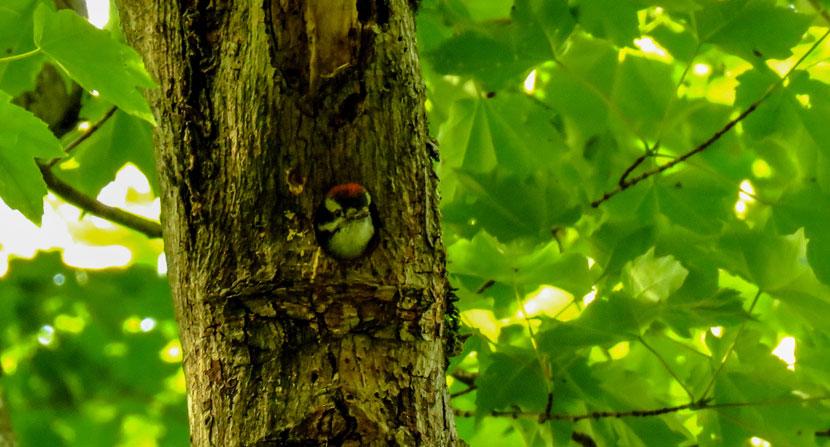
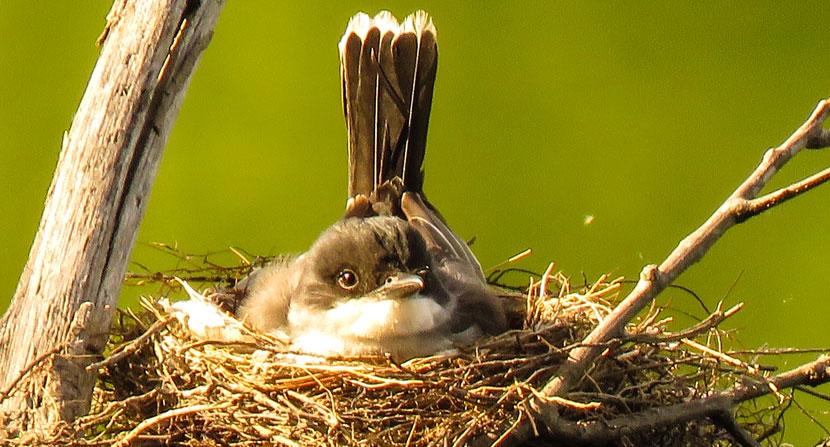
Watching a songbird nest feels like seeing all of the milestones of family life compressed into the space of about three weeks. First, there’s the acquisition of real estate, then home building, followed rapidly by expectant parenthood, birth, helpless infancy, a soaring food budget, demanding adolescents and then, with stunning suddenness, the kids have taken the car keys and left. I was amazed at how quickly the robins’ eggs hatched. One day they were gathering nesting materials, and shortly thereafter, the nest was built and crowded with bald, pale, helpless creatures whose scrawny necks couldn’t possible hold up their nearly transparent heads. The mother robin stood above them, head cocked to one side with a look, to my anthropomorphizing mind, of complete skepticism. How could such unlikely looking offspring survive these unusually chilly June nights? But in a matter of days, the heads were sprouting feathers, the neck muscles were sufficient to point beaks straight up, and worms were being crammed into gaping mouths.
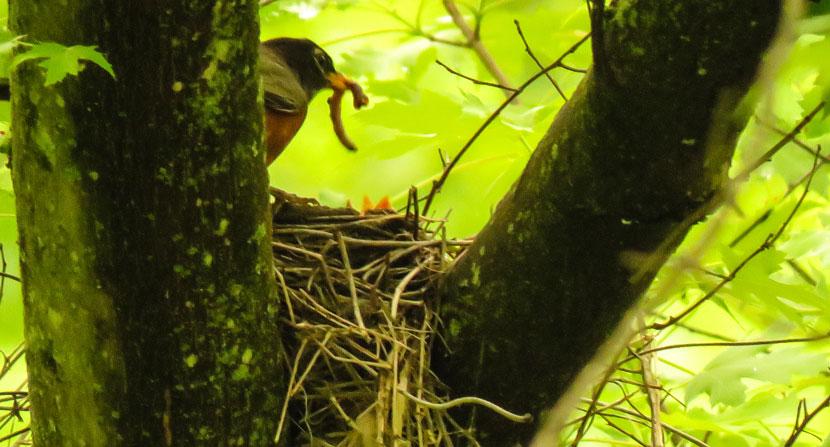
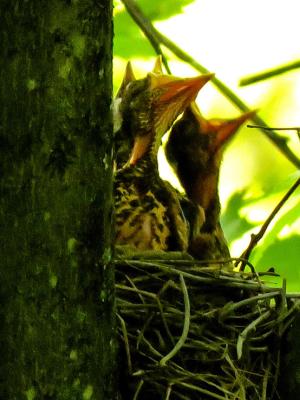
When I saw the little ones next they were fully feathered—what must that feel like?? Going from bald to densely feathered in the space of a week? What a metamorphosis! Equally stunning, from this observer’s point of view, is the nonchalance of the fledging process. One minute, junior is beseeching you stridently for his breakfast, and while you’re out scouring the path for more food to bring back, he stands at the edge of the nest, flaps a few times, and then (without the benefit of parental fanfare), flight! He is in the air, at least briefly, before managing to stick a wobbly landing on a nearby branch. Almost immediately, a sibling does the same, lands on the path, and is hopping along when the parents return. The next day, the robins’ nest is empty, but a few days later, when the mulberries are ripe, the mulberry tree is loaded with young robins, (making me marvel at all of the nests that I didn’t see) many of whom are still wobbling on their branches, begging for a parent to pop a mulberry into their ready, open beaks.
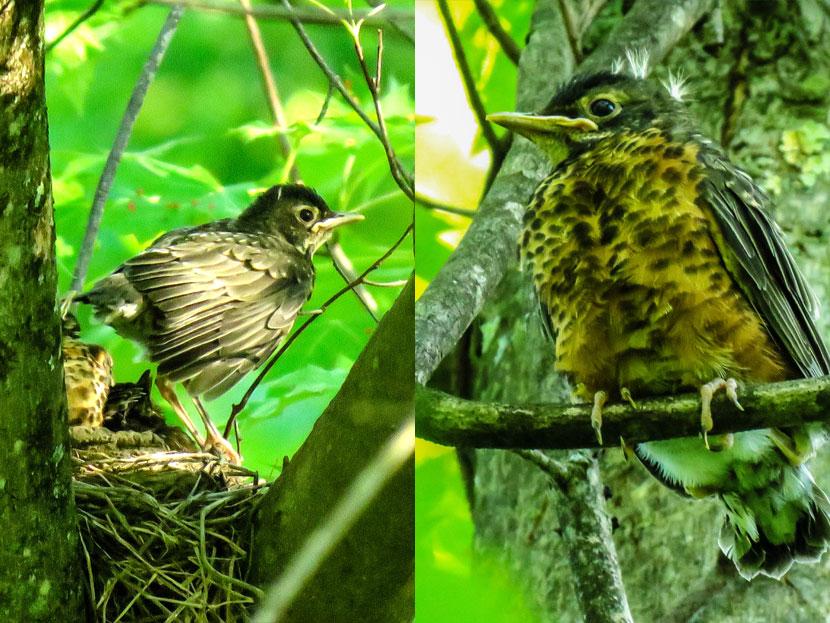
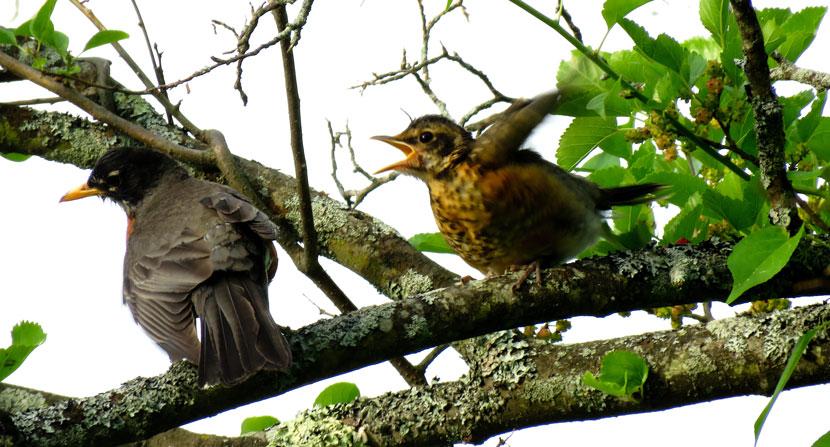
The Captivating Cavity Tree
I became obsessed a wood duck pair in early May. For several weeks, I watched three holes in a dead silver maple where they had made their nest, determined to be present to witness the duckling drop day, when the day-old nestlings fling themselves out of their wood cavity to the ground, some 20 plus feet below. (Spoiler alert: I was NOT present). Anyway, the wood duck pair seemed to have a schedule conveniently coordinated with my pre-work walk down the Mill Brook path, so I took to waiting in the bushes to see the female enter the tree for her egg laying. Wood ducks lay an egg each day for about ten days, then incubate them for another 30 or so. Each morning, right around seven, the pair would fly in from the cove, land in a tree, scope out the neighborhood, and take note of the woman with the camera flicking ticks off in the bushes. The female would pop into either the middle or lowest of the three holes and several minutes later emerge from the lower hole, look around carefully and take off. Her partner waited nervously throughout, fidgeting and making a noise like a high pitched worried mutter. Then one day, this procedure stopped. I figured it was incubation time, and estimated that drop day would be around June 15th. Meanwhile I watched nuthatches scoot around the edges of the cavities, flickers peer into the middle nest hole, and a squirrel stick his head in the lower hole, exit, and use the rim of the cavity to scratch his back. Having completely bonded with this dead tree, I was delighted.
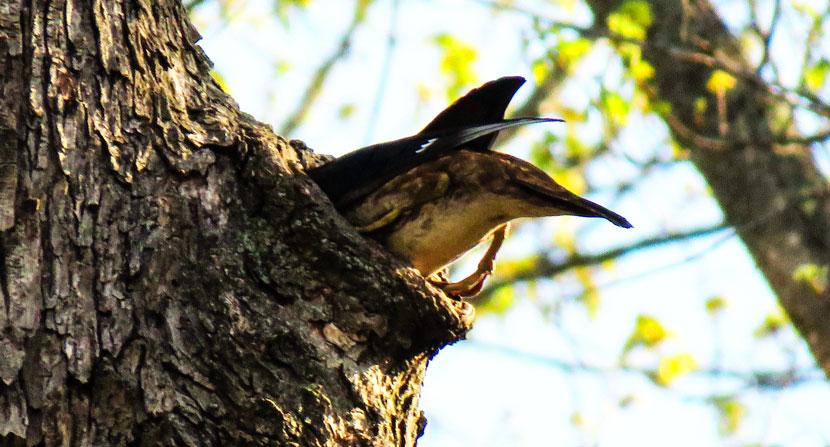
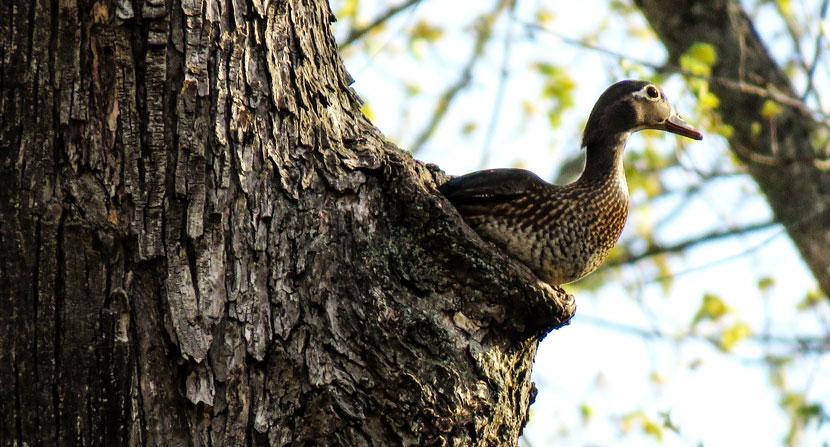
THEN, one morning in early June, a female hooded merganser showed up. Female mergansers can’t help looking furtive and sneaky because of their beady eyes and pointy faces. This one had her crest slicked back for maximum stealth, and she clung to the tree right above the top hole (which I estimate is about eight to ten feet above the lowest hole where Mrs. Wood Duck was probably sitting on her clutch), sticking her neck out and looking first to the left, then to the right, multiple times before entering the top hole. A subplot! What was going on? Did she have a nest inside as well? Was she dropping eggs into the wood duck’s nest, as mergansers are known to do? I kept my camera pointing at that top hole while I speculated, and about five minutes later, she erupted out the bottom hole and took off. The bottom hole that is about ten feet lower than the hole she entered. Tricky duck! Did she have to step on Mrs. Wood Duck on her way out? And what is the architecture of that tree’s interior? I went to work full of questions. About seven days later, it felt to me like drop day. Both the female wood duck AND the female merganser were in the stream below the tree, muttering, looking anxious and hopping on and off a log. There seemed to be a buzz around that tree. And I had a 7:30 meeting. No parachuting ducklings for me. Two weeks later though, I’m happy to report that the marsh is home to several broods of wood ducks, but I’m still wondering about that merganser.
